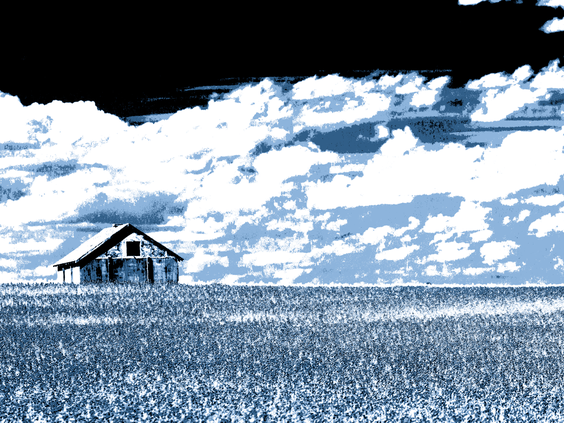At 60, Abby needs a job or her savings will be quickly eroded
In southern Ontario, a woman we’ll call Abby, 60, has a small farm and a looming problem. Her husband of two decades died suddenly, leaving her with modest income, a big mortgage and a question of how she will adjust to life alone. Financially, her dilemma is how to cope with less income and no help on the farm, which is losing money and leaving her to go broke slowly.
The farm never made much money, but Abby satisfied the Canada Revenue Agency that the business was not just a money losing hobby. “My goal is to keep my farm and to have an adequate income to sustain my property,” she explains. Sadly, with present assets and modest farm income, that goal is unrealistic.
The background
Before her husband, Alfred, died, Abby did administrative work. After Alfred passed away, Abby quit her administrative job to run the farm, which generates $24,000 annually in taxable income, on her own. She wants to stay on her small farm for five to 10 years, then sell it for money for a retirement home.
She is her only resource for she has no RRSPs, no pension, no TFSA and no other investments. Cash in the bank is $94,000 earning virtually nothing. She uses it to cover expenses in excess of income. Her mortgage costs her $2,148 per month with a 3.59 per cent interest rate and about 18 years to maturity. Her discretionary income is $2,000 from the farm per month plus current CPP benefits, $438 per month, total $2,438 before 10 per cent average tax, net $2,194 per month. She draws on cash holdings to cover the $4,314 monthly deficit. At this rate, the cash will be gone in 22 months.
Family Finance asked Eliott Einarson, a financial planner in the Winnipeg office of Ottawa-based Exponent Investment Management Inc., to work with Abby.
Abby’s largest financial asset is her 40-acre farm. Its approximate value including equipment and inventory, is $1.1 million. Her three adult children are financially independent with families of their own. Her main liability is her $339,000 mortgage and its $2,148 monthly payment plus $186 for mortgage life insurance. That adds up to $2,334. And that amounts to 35 per cent of total expenses, currently $6,508 per month.
When she winds down her farm operation, Abby can cut costs: $400 per month for animal feed and $80 per month for tractor fuel can be eliminated. That would cut her bills including the mortgage, currently $6,508 per month, to $6,028 per month. That is still too much.
Income outlook
Abby does not have a lot of choices. Her farm equity, its estimated $1.1 million sale price less the $339,000 mortgage, is $761,000 or $723,000 after five per cent selling costs. That sum invested at three per cent after inflation in a relatively low-volatility portfolio or exchange traded fund would generate $21,688 per year. Added to CPP, $5,256 per year, her income would be $26,944 before tax. With no ability to split income with a partner, she would pay 10 per cent average tax and have $2,020 per month.
With the farm sold and mortgage eliminated, Abby’s expenses would decline to $3,910 per month. With no other income, she would have a deficit of $1,890 per month and have no place to live. If she were to spend $2,000 per month on rent, her deficit would be $3,890 per month. She has to get a job to provide at least five years of income and generate savings before she can receive Old Age Security at age 65, currently $7,362 per year.
Building Retirement income
Abby needs a survival strategy. For now, she needs a job or her savings will be quickly eroded. If she can bring home $3,500 per month or $42,000 per year, she can keep her small farm and house, put gas in her car and pay her utilities. This is a bare survival plan.
If Abby can get a job to maintain her present lifestyle costs and mortgage payments for five years to age 65, and then retire, she can expect that her farm and house would have grown at three per cent per year to $1,275,000. If she then sells the farm for 95 per cent of value to cover costs, she could pay off her estimated remaining mortgage balance of $210,000. The remaining $1,001,250 could be invested at three per cent per year after inflation to generate $49,595 per year for the next 30 years at which time all capital and income would have been paid out. She could add $7,362 Old Age Security at present rates to her present CPP benefits, $5,256 per year to boost income to $62,213 before tax. After 18 per cent average tax, she would have $4,250 per month to spend. That would cover her reduced monthly expenses.
Abby is in good health. If she can get a job that gives her $3,500 per month after tax, this plan will work. If her income from the job is half that, her first five years before she can receive Old Age Security would be difficult. She could reduce monthly mortgage expense by remortgaging her property. That could reduce expenses now but add costs later on.
“Abby has a serious cash-flow problem now,” Einarson says, “but it can be solved if she gets a job for five years. Assuming she returns to her former work in administration and makes $42,000 per year, she can have security in a postponed retirement.”
Canada’s retirement benefit system is supplemental. CPP benefits depend on contributions. OAS is an income-tested top up of retirement cash flow subject to the clawback that limits what the plan pays. Abby is fortunate to have a large asset, her farm, she can sell for capital to generate the money she needs.
Retirement stars: Two retirement stars ** out of Five






